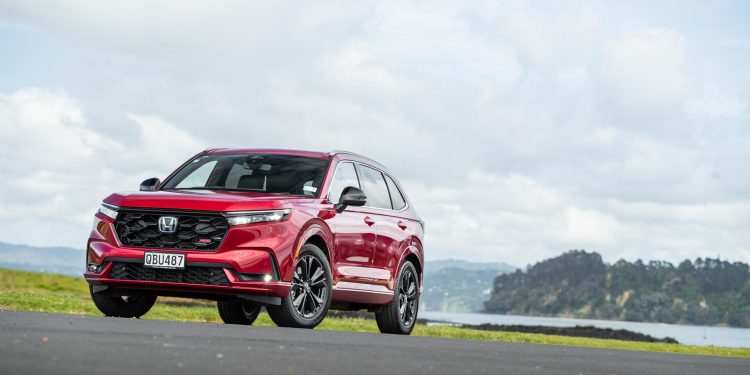2023 Honda CR-V RS review
Words: Kyle Cassidy | Photos: Isaac Western
Honda’s local line-up continues its renewal with the arrival of a fresh CR-V. Now in its sixth generation, we check out the new Comfortable Runabout Vehicle, complete with hybrid power.
When Honda introduced its CR-V to NZ back in 1996, the new high rider was the outlier among a line-up of sedans and hatches.
Now, most of those nameplates are no longer sold here, except for the Honda Civic but that’s far from the sales force it once was.
Honda’s local line-up has been a tad depleted of late, bolstered by the new Honda ZR-V but we’re still awaiting the arrival of new HR-V and we’ve been without the CR-V for a few months too.
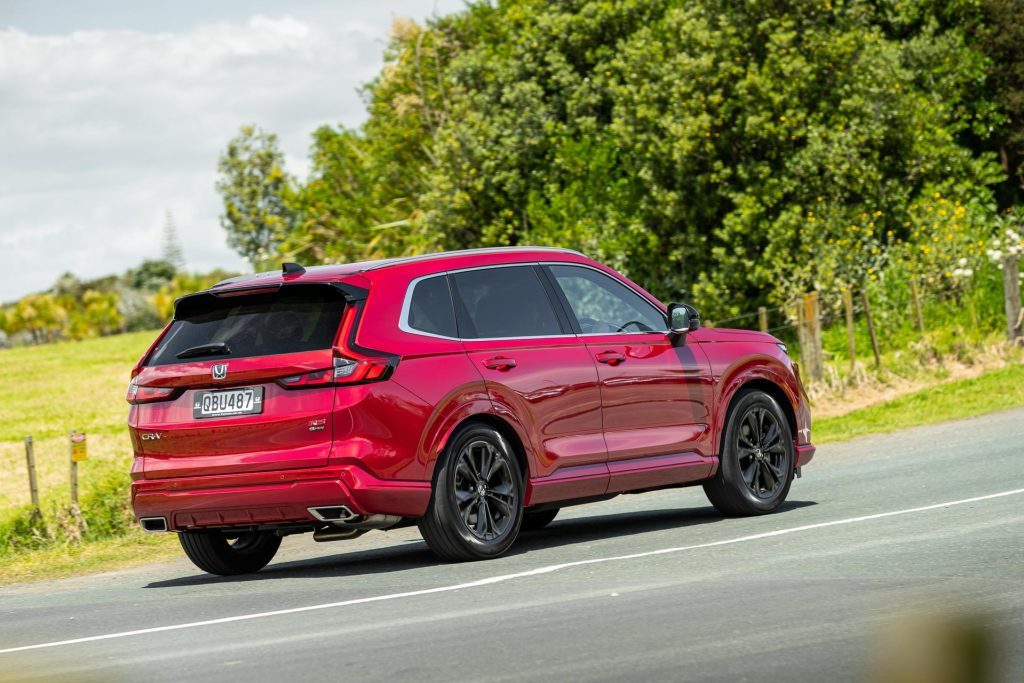
That is now back in stock, and all new, the sixth generation model landing with three variants to choose from.
Keeping with the theme of 2023, prices have risen some, the range now starting at $53,000 for the AWD Sport, with the Sport 7 at $57,000, both with the familiar but revised 1.5T petrol and CVT combo.
Then there is a hefty jump up to the RS we have featured at $67,000. That’s quite an ask for a CR-V but it does bring with it new hybrid tech.
Two motors, one engine
While a hybrid model has been offered in other markets previously, the new RS is the first CR-V here to be electrified. It has the rather complex ‘twin motor’ hybrid system which, according to Honda, has five major parts.
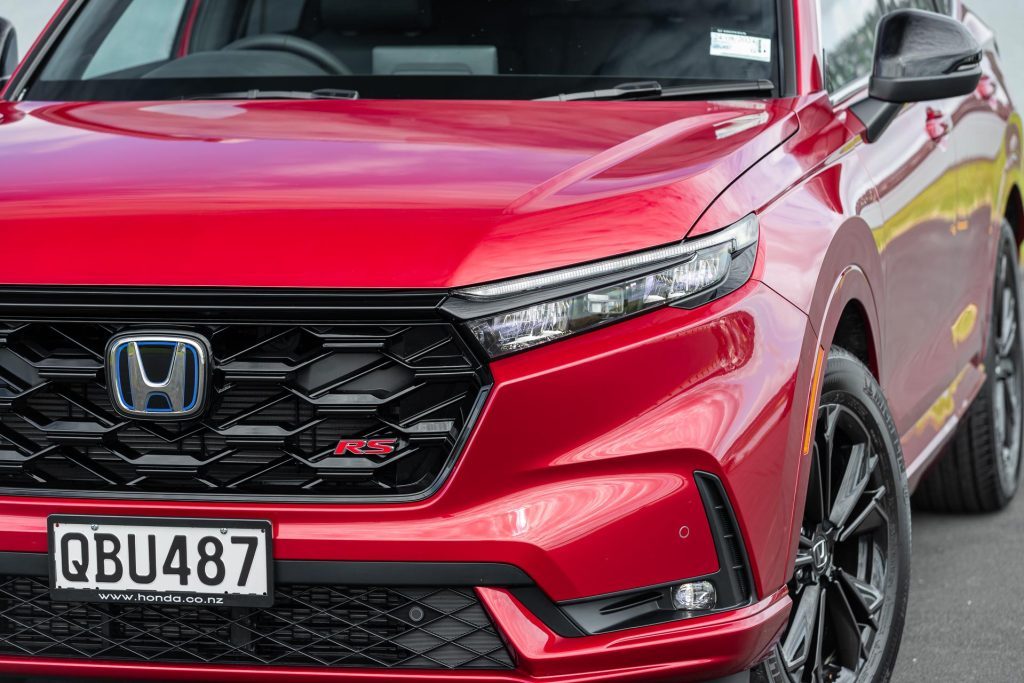
One of the motors is the electric generator that supplies power to the hybrid battery while the other is the electric propulsion motor that ‘drives the wheels directly’.
There’s a 2.0-litre Atkinson-cycle petrol engine that turns the electric generator making power for the battery. There’s the Intelligent Power Unit which ‘houses the battery (1.06kWh) and its controlling hardware’ and the Power Control Unit ‘the “brain” of the system controlling all hybrid functions’.
Honda’s brochure says it has an ‘e-CVT Electronic Control Continuously Variable Fixed Gear Transmission’. So is it fixed or variable?
And from our understanding, there is no transmission as we know it, although the interplay of the motors and lock-up clutches does transmit the power to the wheels, in a fixed yet variable fashion.
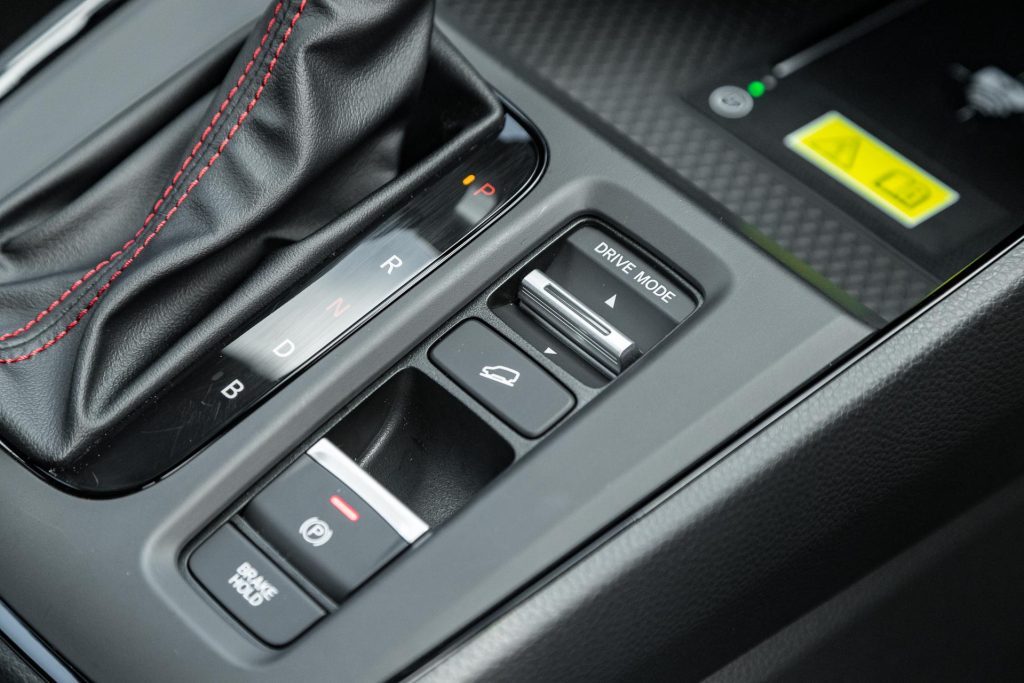
The new system adds a pair of lock-up clutches to mix, one operating at low speeds (which also enables this hybrid a mild 750kg tow rating), the other at high speed.
This means that at certain times, when the engine is deemed to be in its most efficient operating range, one of the lock-up clutches can ‘engage the drive motor to the generator motor’, and given the engine is connected to the generator that allows it to ‘transmit engine torque directly to the drive wheels’.
While very complex, the good thing is you don’t need to know any of the above as Honda has kept the operation simple as; turn it on, select D and go.
For those who might want to fiddle, there are paddles to introduce some mild motor regeneration, emphasis on the mild, or similarly they can select the B mode on the gear lever. We really wouldn’t bother.
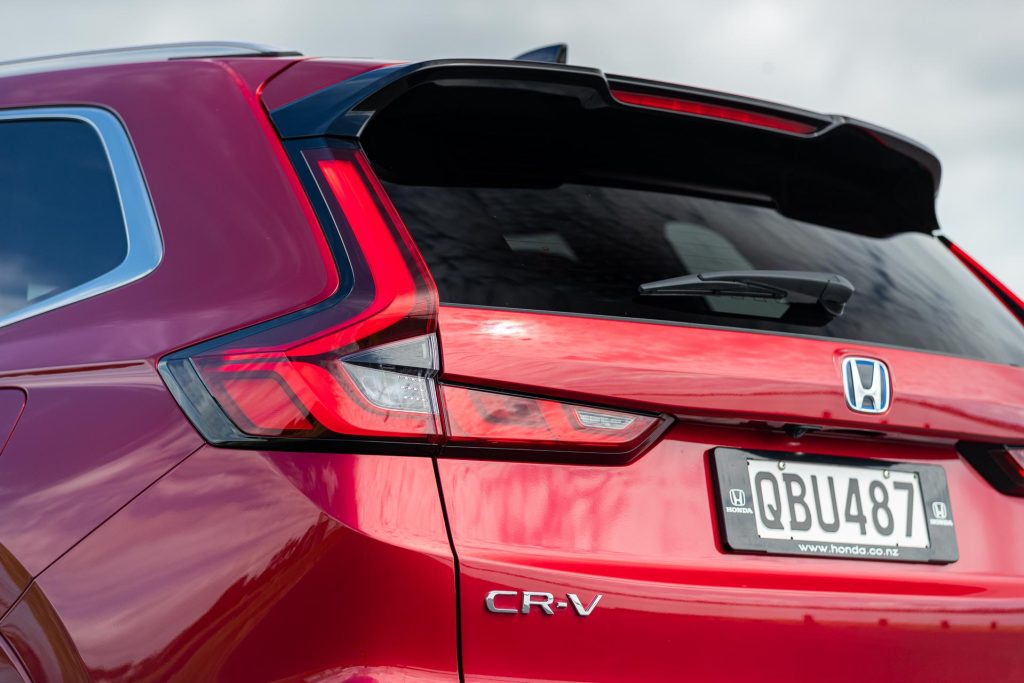
The most confusing aspect is the faux gear shifts the powertrain performs. Under harder acceleration, the engine needs to spin faster to ensure the generator is charging the battery sufficiently for the motor to feed on.
With the throttle pinned, the engine revs right out, and will sit there spinning. To help give the hybrid a more conventional feel to its operation, they have engineered mock shifts called ‘Linear Shift Control’, which creates a ‘speed-linked engine rev feel of a conventional drivetrain shifting gears’.
While it’s a hybrid, there’s no charging involved; just fill it with petrol (Honda managing to run the high compression Atkinson engine on regular 91) every other week.
It’s reasonably economical as you’d expect, the WLTP numbers quoted are 6.4L/100km while we saw 6.9L/100km during our time. That’ll net you between 700 to 750km between fills for mostly urban running.
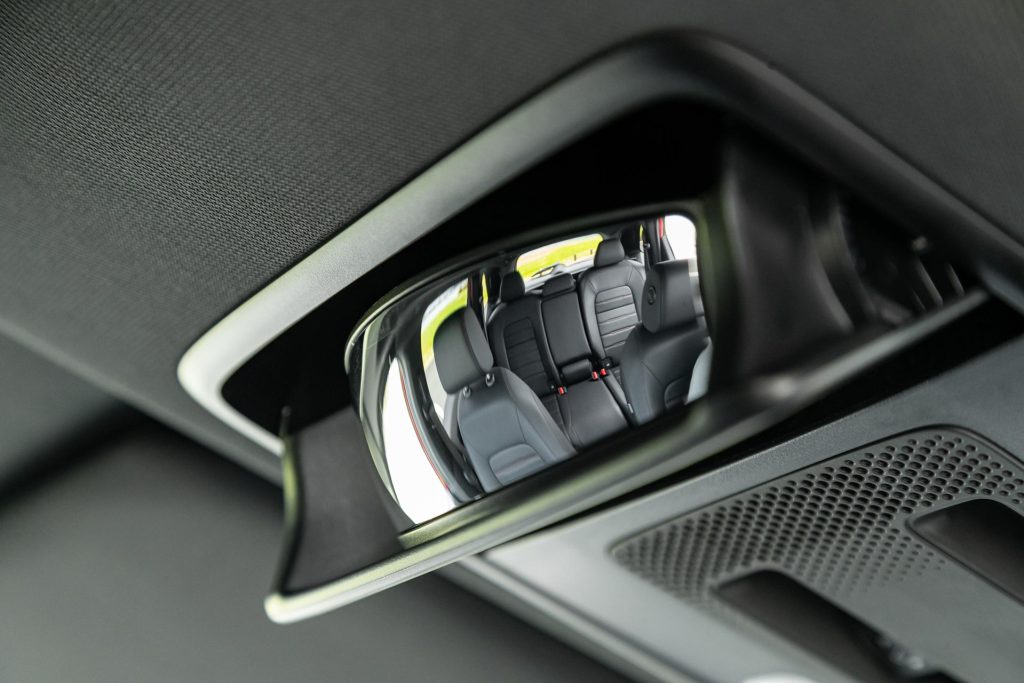
Easy going
With its electric motor torque at the ready, the RS gets underway smartly, sometimes troubling the traction of this front driver if you’re a bit keen. Honda quotes 135kW and 335Nm as the output, the latter giving it good, easy pulling power in traffic.
While CR-V is a little longer and wider, the wheelbase increased by 40mm, it’s still urban friendly. Low speed manoeuvres are eased by quick steering (2.3 turns), though the 11.4m turning circle isn’t the tightest.

Like the Civic, this CR-V has a dash of sport about its ride, but then Honda is keen to ‘bring the joy back to driving’. The shockers are quality items, dubbed Amplitude Reactive Dampers with twin pistons to help sort both the minor bumps while managing the body movements at speed to aid stability.
It does a better job of the latter, and while it’s not fidgety, the low speed ride could be plusher. It does deal with the big bumps of a lumpy highway road competently however.
While the engine is quiet when cruising, there’s some tyre roar on coarse chip, though it’s not horrendous.
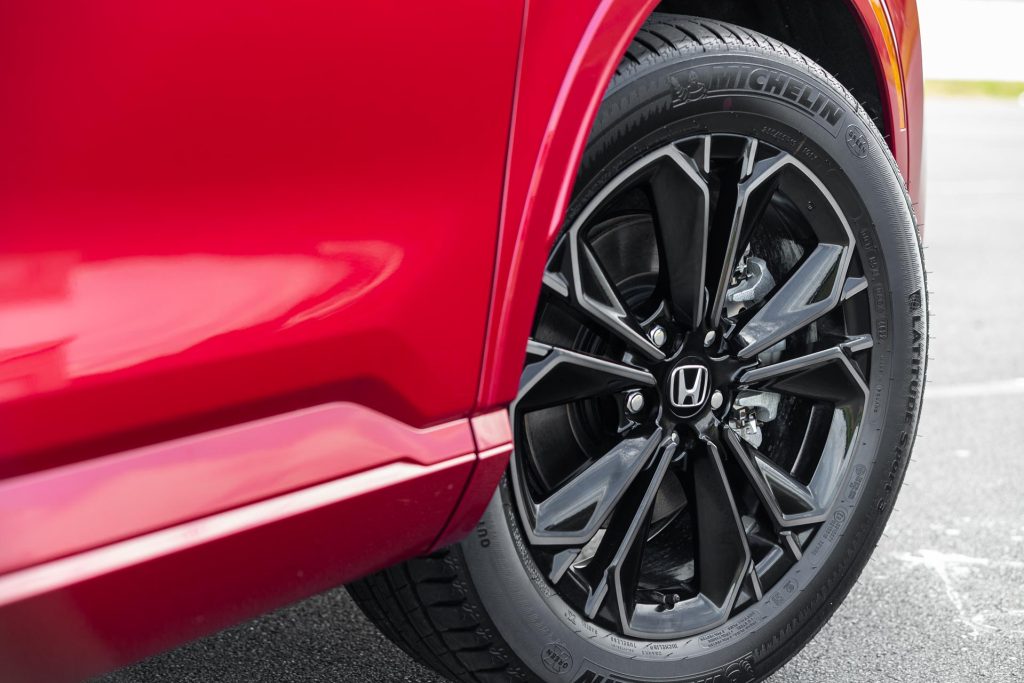
The steering makes just the right connection for a medium SUV while managing to dial out the road shock. And this CR-V turns astutely on command, the body movements front and rear kept pretty tidy.
It’s difficult to induce understeer as the electronic aids like torque vectoring by brake keep it from straying and tracking as directed, even if you keep pressing the issue. The brakes are even okay for a hybrid, with a reasonably consistent pedal feel.
Most of the safety systems are well behaved, save for the lane departure gizmo, which is overly keen in its default mode.
While you can’t switch it off completely, you can temper its enthusiasm in the driver assistance settings, and it’s then less bothersome.

Otherwise the beeps and bongs are kept to a minimum while the active cruise can help ease the rush hour grind with its Traffic Jam Assist function. If you mess it up, there are 11 airbags waiting to cushion the blow.
Practical of course
The CR-V affords its driver a good position, the seat multi-way adjustable (powered and with two memory settings) though the wheel could do with a tad more reach.
While the seats could be more on the sumptuous side, they are supportive. There’s great outward vision too, a Honda theme of its new models, with slim A pillars and the mirrors don’t obstruct your view either.
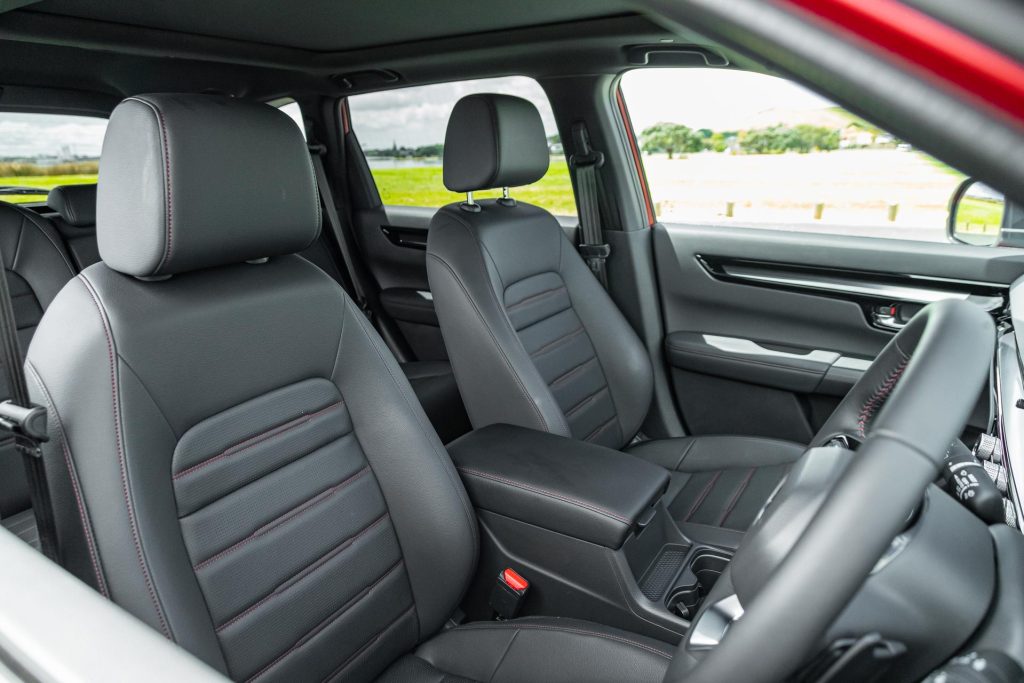
These also perform their primary function well, not always a given as designers chase aero with ever smaller mirrors.
There’s a familiar Honda interior design here, also seen both on the Civic and ZR-V with the mesh ventilation strip running the length of the cabin and the modest-sized infotainment screen sitting atop the dash.
This is pretty straightforward in operation, the system being one that has what you need without the frippery of some others. Operation is simplified via hard home and back buttons, along with a real volume control; Honda’s experiment with haptic sliders is done for now.
They’re gone from the steering wheel too, replaced by easier to use toggles and click wheels. This Honda even has proper ventilation controls too.
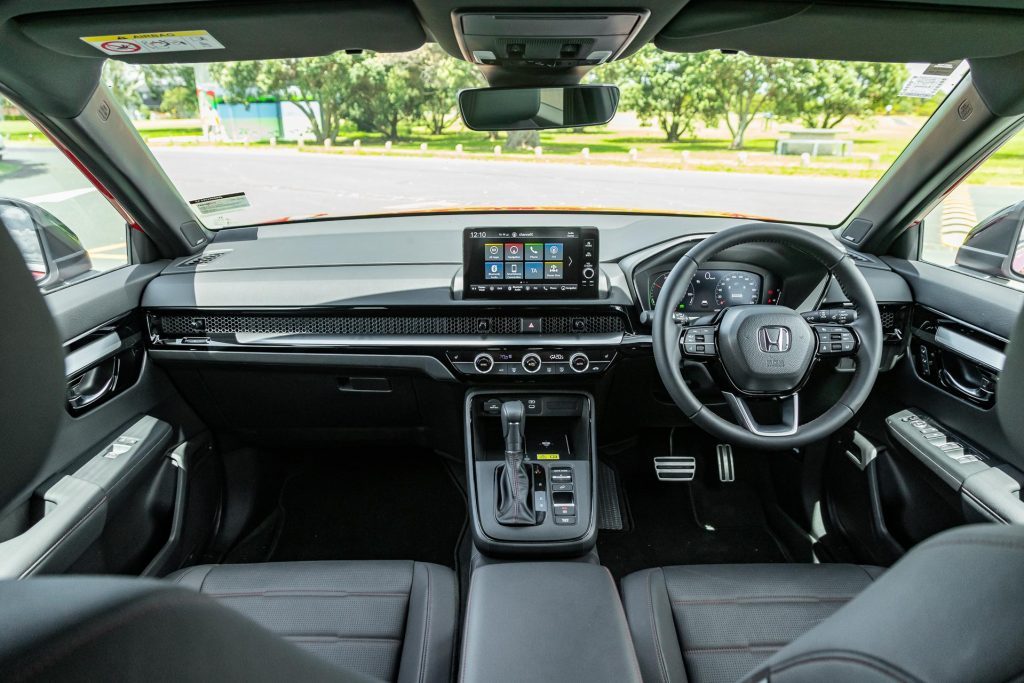
All so easy. Heck, it even has a good old fashioned gear lever. There is also a well placed charge pad, wireless Car Play and Android Auto, good cup holders, a big centre bin and useful door pockets.
Only a few spots of these are lined, however, and there are still hard plastics about the cabin. There’s the Honda Connect app too and if you find the key too bulky, just put the key card in your wallet, and it’ll do the same job.
Bigger dimensions and Honda’s design philosophy of minimising the mechanicals to maximise space for humans sees CR-V boasting better accommodations.
The rear doors open out wide for easy access but watch your butt on the overly firm squab edge as you sit down. The rear seat space is now more generous, the flat(ish) floor giving some leg room for an occasional middle child.
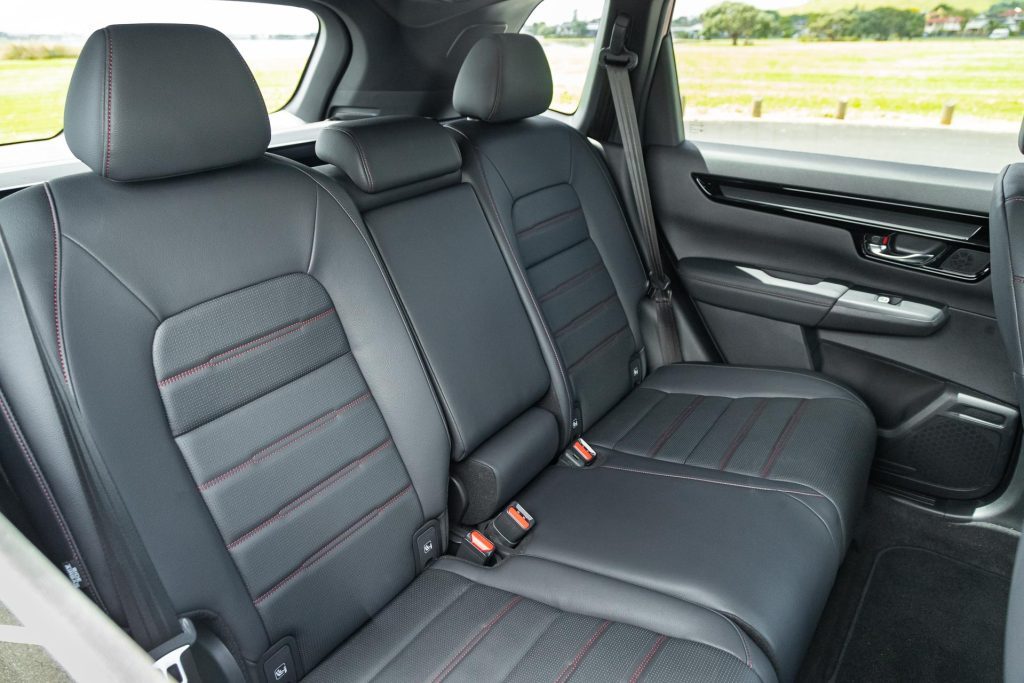
Honda persists with hanging the centre belt from the roof which just isn’t that user friendly.
The rear seat can recline a little for added lounging and there are the usual USB-C jacks and Isofix points present.
CR-V has a good sized cargo hold, long and deep, though there’s no underfloor storage, and no spare either, just a repair kit instead.
The tailgate is powered and gesture controlled, and while there are no remote levers for the split folding, the rear seat does fold down easily via the handles on the seat base, though the load area isn’t quite level.
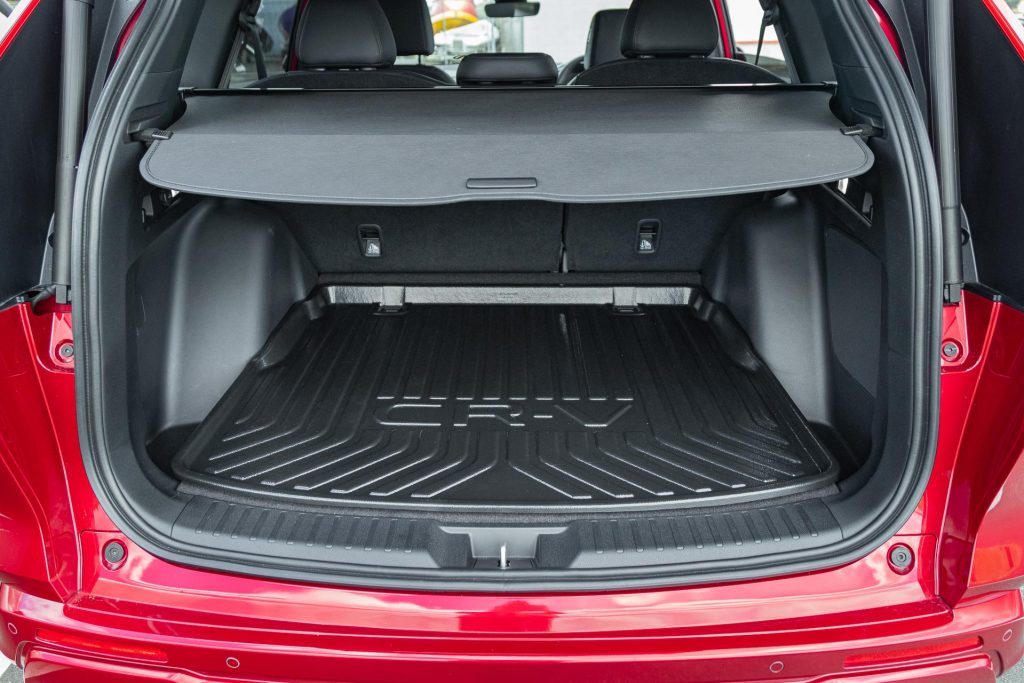
Worthy then?
As always, the CR-V is a competent contender, doing most things in an accomplished fashion while managing to have few annoying traits, if any.
The sticking point is the price, but then a look at the top-end competition sees it’s not alone in charging close to $70k for a medium SUV.

At least you know it’s the price everyone will pay, no haggling, and it’s backed by a big warranty.
| Model | Honda CR-V RS |
| Price | $67,000 |
| Engine | 1996cc, IL4, T, DI |
| Power | 109kW @ 6100rpm |
| Torque | 183Nm @ 4500rpm |
| Total Hybrid Output | 135kW/335Nm |
| Battery | 1.06kWh |
| Drivetrain | e-CVT / FWD |
| Fuel Use | 6.4L/100km |
| C02 Output | 146g/km |
| 0-100km/h | 7.85 sec |
| Tyre Size | f/r-235/55/R19 |
| Fuel Capacity | 57L |
| Stability systems | ABS, ESP, TV |
| Safety | AEB, ACC, BSM, LDW, RCTA, ALK, AHB |
| Luggage Capacity | 581-1636L |
| Tow rating | 600kg (750kg braked) |
| Service intervals | 12 months/15,000km |
| Warranty | 5 years/unlimited km |
| ANCAP rating | Not yet rated |
| Weight | 1771kg |
This article first appeared in the December/January issue of NZ Autocar Magazine.


